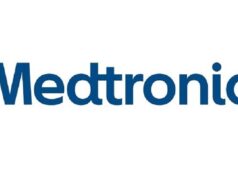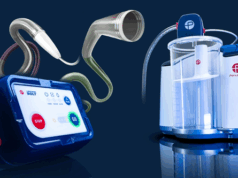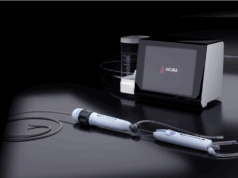Daiichi Sankyo announced late-breaking data from two pre-specified subgroup analyses of East Asian patients with non-valvular atrial fibrillation or venous thromboembolism enrolled in two phase 3 edoxaban studies. The findings of the two subgroup analyses of 1,943 East Asian patients (Japan, mainland China, Korea and Taiwan) enrolled in the ENGAGE AF-TIMI 48 study and 1,101 East Asian patients enrolled in the Hokusai-VTE study were consistent with the results from the global study populations, which demonstrated investigational edoxaban was comparable to warfarin for the prevention of stroke or systemic embolic events in non-valvular atrial fibrillation patients and for the treatment and prevention of venous thromboembolism, respectively.
The subgroup analyses also demonstrated findings consistent with the full study populations for the principal safety outcomes in both studies. The data were presented at the Japanese Circulation Society 2014 Annual Scientific Meeting in Tokyo, Japan.
In the subgroup analysis from the ENGAGE AF-TIMI 48 study, once-daily edoxaban was evaluated in two treatment strategies, a high-dose arm (60 mg or 30 mg dose reduced) and a low-dose arm (30 mg or 15 mg dose reduced), compared to warfarin in 1,943 East Asian patients with non-valvular atrial fibrillation. In both edoxaban treatment arms, the edoxaban dose was reduced by half for patients with clinical factors that were known to increase the risk of bleeding (renal impairment, low body weight or concomitant use of certain p-glycoprotein inhibitors). The edoxaban high-dose treatment arm had an annual incidence of stroke or systemic embolic events of 1.34% versus 2.62% for warfarin (hazard ratio [HR], 0.53; 95% confidence interval [CI], 0.31 to 0.90; p=0.02), and resulted in fewer major bleeding events (2.86% vs. 4.80% per year, respectively) (HR, 0.61; 95% CI, 0.41 to 0.89; p=0.011). The edoxaban low-dose treatment arm had an annual incidence of stroke or systemic embolic events of 2.52% versus 2.62% for warfarin (HR, 0.98; 95% CI, 0.63 to 1.54; p=0.93), and resulted in fewer major bleeding events (1.59% vs. 4.80% per year, respectively) (HR, 0.34; 95% CI, 0.21 to 0.54; p<0.001).
In the subgroup analysis from Hokusai-VTE, which evaluated once-daily edoxaban in patients with either acute symptomatic deep vein thrombosis , pulmonary embolism , or both, 1,101 East Asian patients treated with edoxaban 60 mg (or a patient specific dose of edoxaban 30 mg for patients with renal impairment or low body weight or p-glycoprotein inhibitor use) had a numerically lower incidence of recurrent symptomatic venous thromboembolism compared to warfarin (2.8% vs. 4.5%, respectively) (HR, 0.64; 95% CI, 0.34 to 1.19; p=0.1601). Once-daily edoxaban also had a lower incidence of clinically relevant bleeding (major or non-major) compared to warfarin (9.9% vs. 17.3%, respectively) (HR, 0.56; 95% CI, 0.40 to 0.78; p<0.001). The Hokusai-VTE study was designed to reflect clinical practice using flexible treatment duration of three to 12 months, including initial heparin treatment.
“The ENGAGE AF-TIMI 48 and Hokusai-VTE trials enrolled large numbers of patients from all regions of the world to advance the understanding of how edoxaban works in a heterogeneous group of patients,” says Glenn Gormley, senior executive officer and global head of research and development, Daiichi Sankyo, and president and chief executive officer of Daiichi Sankyo in the United States. “The findings from these subgroup analyses further our understanding of edoxaban in East Asian populations, and were consistent with the global patient populations studied.”
Daiichi Sankyo has filed for approval of once-daily edoxaban in Japan, USA and the EU for non-valvular atrial fibrillation and symptomatic venous thromboembolism.









